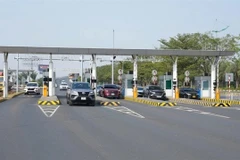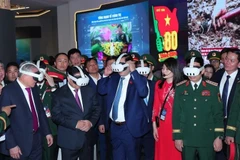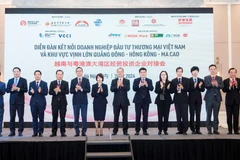In Vietnam, many newproduction and business models approaching a circular economy are beingimplemented rather successfully in the private sector, creating manyopportunities for the economy, the Nhan dan (People) daily reported.
Eco-industrialparks in Ninh Binh province, Can Tho city, and Da Nang city are examples,helping save millions of US dollars each year.
The foreign direct investment (FDI) sector has proved to be adynamic player in promoting the circular economy by devising plans to recyclewaste and by-products through modern processes.
Among them, Nestlé is producing unbakedbricks from boiler waste, fertilisers from non-hazardous waste mud, andeco roof sheets from milk cartons. It also plans to recycle and reuse 100% ofproduct packages by 2025. Meanwhile, nearly 99% of waste or by-products of HeinekenVietnam have been reused or recycled, and four of its six beer breweries areusing heat energy generated from renewable energy and low-emission fuels.Unilever Vietnam is implementing a programme on collecting and recyclingplastic packages and sorting waste at source.
In the textile -garment sector, some enterprises have recycled fabric scraps into new fabricsand used them as part of new clothes labelled “CE”, which enables products tobe sold in Europe and the European Free Trade Association (EFTA).
However, some experts said production and business models of a circulareconomy haven’t become popular in Vietnam, since most of the enterprises still focuson short-term targets while the circular economy creates long-term values.
They also pointed outthe shortages of legal and infrastructure conditions, the low demand for circularand replaceable products, the lack of experts in this field, and the currentGDP calculation methodology yet to give due attention to social andenvironmental factors.
Despite challenges, the circular economy generates a number ofbenefits for the economy. Each change starts from small actions, and it isnecessary to pin hopes in this model and encourage the parties concerned tosupport and follow, said Director of the National Startup Support Centre PhamDung Nam as cited by Nhan dan.
Developing a circular economy is even harder than promoting innovationbecause innovation focuses on the economic aspect while a circular economybalanced both business and environmental protection dimensions, according tothe newspaper.
The Party and State have affirmed its viewpoint on developing acircular economy so as to achieve sustainable development.
On February 11, 2020, the Politburo issued a resolution on orientations for the national energy development strategy by 2030, with avision to 2045. This document affirms the priority for renewable energy andwaste-to-energy plants to protect the environment and develop the circulareconomy. The 2020 Law on Environmental Protection officially includesregulations on this economic model.
The plan on developingthe circular economy in Vietnam, approved by the Prime Minister on June 7,2022, identifies the circular economy development as inevitable matching theglobal trend and the requirement for making breakthroughs in economic recoveryand realisation of the Sustainable Development Goals.
Pham Hong Quat, Direct of the National Agency for TechnologyEntrepreneurship and Commercialisation Development, said in the context of globaleconomic integration, Vietnam has joined a number of new-generation free tradeagreements with many countries and regions. Those deals include commitments on environmentalsafety, so adopting the circular economy model is an inevitable trend to achievesustainable development.
Suggesting severalmeasures, Dr Nguyen The Chinh, former Director of the Institute of Strategy andPolicy on Natural Resources and Environment, noted the State should keepfine-tuning policies and laws, issue regulations and standards on circulareconomy development that are in line with regional and global trends, and use suchtools as technical standards and taxes to minimise resource overexploitationand waste during the production process.
It also needs toconvert to a growth model based on efficient use of natural resources, encourageenterprises to adopt practices of a circular economy, and issue strict rules oncompanies’ responsibility for their waste, he added./.































